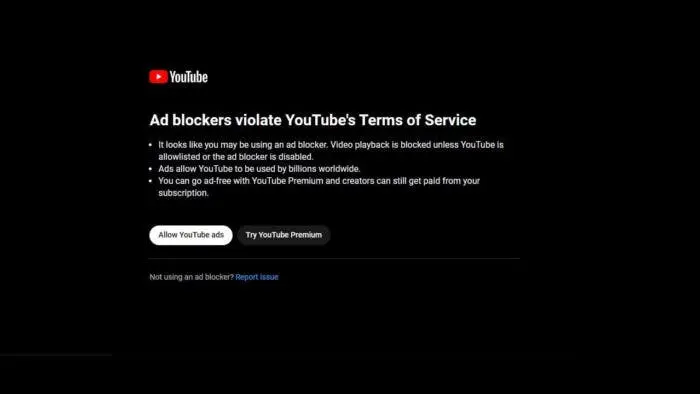Highlights
- YouTube enforces site slowdowns for users with active ad blockers.
- Strategy aimed at encouraging ad blocker users to subscribe to YouTube Premium.
- Noticeable performance degradation reported by affected users.
- Mixed reactions within the community to YouTube’s aggressive anti-ad blocker measures.
In an ongoing effort to discourage the use of ad blockers, YouTube has recently implemented a new strategy that has drawn both attention and criticism.
The platform, a major player in online video streaming, has started deliberately slowing down its site for users who employ ad blockers.
YouTube’s Escalating Response to Ad Blockers

For years, YouTube has grappled with the widespread use of ad blockers by its viewers.
Advertisements play a critical role in the platform’s revenue model, funding not only YouTube but also its vast network of content creators.
In response to what it sees as a circumvention of its financial backbone, YouTube has begun deploying more direct tactics to encourage users to discontinue ad blocker use or to consider subscribing to its premium service, which offers an ad-free experience.
The Impact of Slowdowns on User Experience

Reports from various users indicate a noticeable degradation in site performance, characterized by lag and unresponsiveness, when ad blockers are active.
This slowdown, described by YouTube as “suboptimal viewing,” is lifted once the ad blocker is disabled.
While this approach effectively underscores the importance of ad revenue for the platform, it also raises questions about the balance between monetization and user experience.
The community’s reaction to these measures has been mixed.
Some users view this as an aggressive tactic, potentially alienating a portion of the audience.
The strategy not only impacts the immediacy and fluidity of content consumption but also sparks a broader conversation about advertising practices and user autonomy on the internet.
As YouTube continues to enforce its terms of service in innovative ways, it stands at a crossroads.
The decision to double down on such measures could shape the platform’s relationship with its user base and potentially set a precedent for how other content platforms manage ad blockers.
But at the same time we must also understand that blocking ads is eating into the video-sharing platform’s biggest revenue stream and as such the company will want to protect it.
FAQs
Why has YouTube started slowing down its site for ad blocker users?
YouTube’s decision to slow down its site for users with ad blockers is a strategic move to protect its ad-based revenue model.
As ads are a significant source of income, the company aims to discourage the use of ad blockers or encourage users to opt for its ad-free premium subscription.
What changes do users experience on YouTube with an active ad blocker?
Users with ad blockers have reported a notable decrease in YouTube’s site performance.
This includes issues like lagging and unresponsiveness, which are resolved upon disabling the ad blocker. YouTube refers to this as a “suboptimal viewing” experience.
What has been the community’s reaction to YouTube’s new measure?
The community’s reaction is mixed. Some users see this as an unnecessarily aggressive tactic, which might alienate viewers.
Others understand it as a necessary step to ensure the platform’s financial stability.
Could YouTube’s strategy set a precedent for other platforms?
YouTube’s approach to handling ad blockers could potentially set a precedent for other online content platforms.
It highlights the ongoing struggle between maintaining ad-supported content and offering ad-free viewing experiences.
What are Official Solutions and Controversies around the YouTube Ad Blocker ?
YouTube offers two official solutions to this problem: disabling the ad blocker or subscribing to YouTube Premium.
However, both options have sparked controversy among users. Disabling the ad blocker means enduring lengthy, sometimes unskippable ads, while the premium subscription comes at a cost of $10 per month.
What has been the Community Response and Alternative Platforms around YouTube Ad Blocker ?
The community’s response has been mixed, with some users finding alternative ways to view YouTube content without ads, such as using different video downloaders or third-party platforms like Invidious and Piped.
The issue of YouTube slowing down for users with ad blockers represents a significant challenge in the balance between user experience and monetization strategies.
As the platform intensifies its efforts to discourage ad blocking, users are left with a tough choice: comply with YouTube’s guidelines or seek alternative solutions, both official and unofficial.
Also Read: YouTube Music’s 2023 Recap Is Rolling Out Now With Personalised Album Art and More
Also Read: YouTube Is Rolling Out a New Smaller Skip Ad Button in Some Regions
Also Read: Exploring the Value of YouTube Premium in India in 2023: Is It Truly Worth It?
